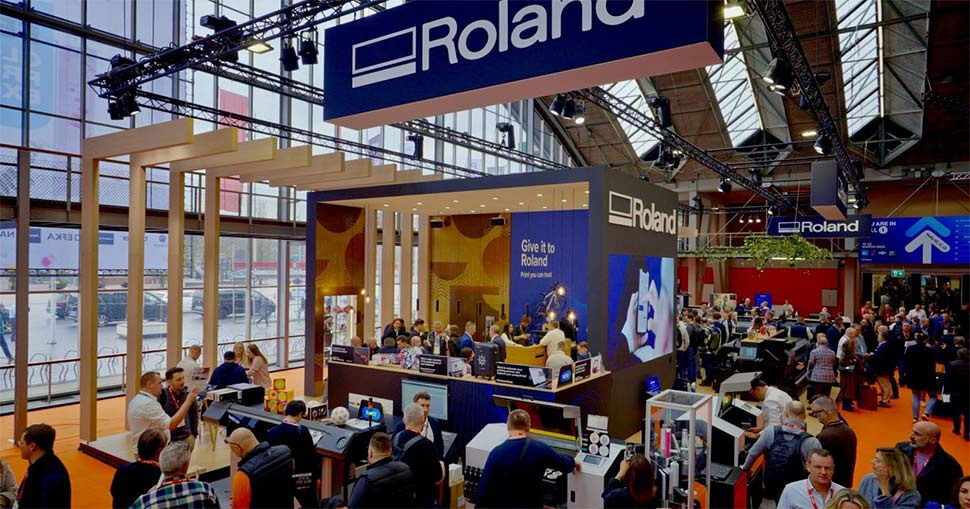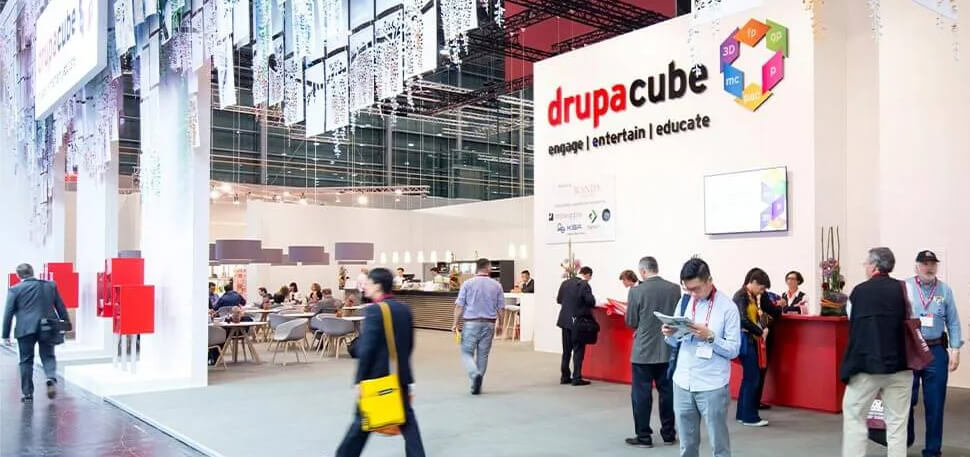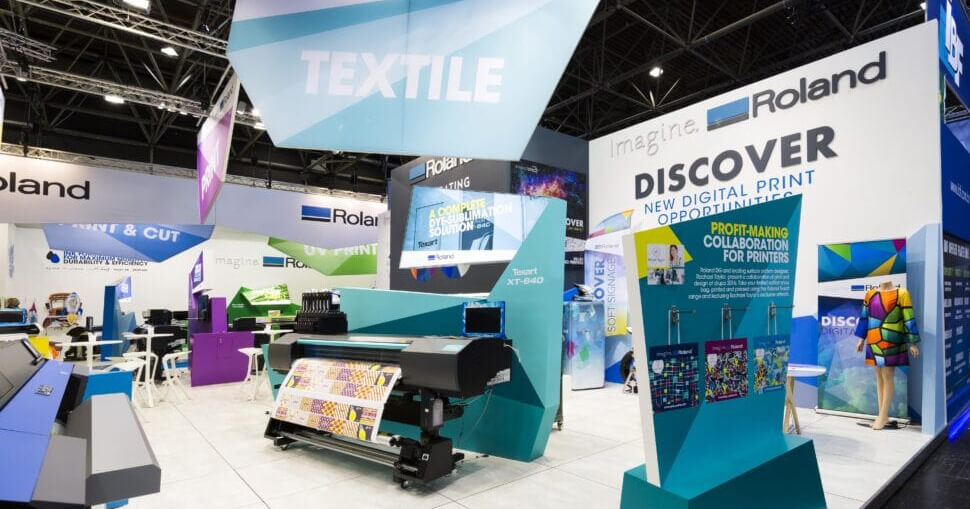Once upon a time, trade fairs were the beating heart of medieval cities – crossroads where merchants, travellers, and past innovators converged to seal deals with a handshake and a promise of trust. Today, trade exhibitions retain their timeless charm and effectiveness even in a world dominated by e-commerce, Zoom calls, and digital platforms.
Naturally, reaching a trade fair can sometimes feel like an epic journey. Endless paths winding through expansive pavilions—or smaller ones crammed with exhibitors—new brands emerging like mushrooms, making it challenging to evaluate their offerings and reliability, all while battling that persistent feeling of having just missed the most intriguing stand as you queue for a well-deserved coffee.
Yet, visiting a trade fair remains one of the most thrilling experiences for those looking to discover new trends, build genuine relationships, and—why not?—pick up a couple of interesting gadgets. In the digital era, where announcements flood our screens nonstop, seeing a product in person that has captured our curiosity makes all the difference.
Today, however, we have a game changer: artificial intelligence. Whether it’s planning every moment of your visit, navigating through the stands, maintaining an accurate record of what you have seen, or following up on connections made during the event, technology can transform the potential chaos of a trade fair into a well-organised and productive experience.
This article is intended for those who wish to make their trade fair visit genuinely valuable for themselves and their business. From pre-event preparation to final follow-up, it provides practical tips and insightful reflections on the evolving role of trade fairs in an age increasingly influenced by digital transformation.
The Visit Begins (Well) Before You Arrive at the Fair
Every trade fair starts long before you set foot in the exhibition halls. Proper preparation is not just a good idea—it’s the key to turning the experience into something truly productive. After all, going into battle without a strategist means risking defeat before even engaging, and in many ways, a trade fair is no different. Success rewards those who plan ahead.
Define Your Goals – First and foremost, ask yourself: Why am I visiting this trade fair? It may seem like a basic question, but it’s always essential. What is your objective? Are you looking for new suppliers, strengthening relationships with existing ones, or seeking inspiration for a project or a new business idea? Are there adjacent markets that could be a natural extension of your business without overloading resources? Or perhaps you are forging new collaborations?
Once you’ve defined your purpose, everything else—from the routes you take to the meetings you schedule—becomes more evident, helping you avoid falling victim to randomness and chaos.
Let AI Do the Heavy Lifting – We live in an era where you can delegate much of the preparation to technology. Here are some practical ways to do so:
Research Exhibitors –Use tools like ChatGPT to compile a list of companies that match your interests. You can gather descriptions of their products or services to decide who to visit. Upload the exhibitor list or provide a direct link to the trade fair’s website, allowing AI models like ChatGPT to analyse the data. Tools like Perplexity can help you identify the most relevant industry trends and find exhibitors that meet those criteria.
Create a Schedule –With apps like Google Calendar or Notion, you can organise exhibitor visits based on your goals. Some trade fairs even offer virtual assistants that create personalised itineraries for you. Alternatively, you can ask ChatGPT to plan your visits according to your available time and priorities, optimising your route. The AI will generate a tailored schedule that balances structured planning with some free time for spontaneous exploration.
Here’s an example of a prompt you can use:
“I am attending [Trade Fair Name] in [Location] from [Start Date] to [End Date]. I am particularly interested in the following sectors: [Sector 1, Sector 2, etc.]. Here is a list of exhibitors I am most interested in: [List of Exhibitors]. I have [Available Time] per day to explore the fair and would also like to attend [Specific Events like workshops, talks, or seminars]. Can you help me plan a daily itinerary that maximises my time while leaving room for discovering other interesting stands?”

Smart Insights – Delegating to technology doesn’t mean switching off your brain—it means letting tools handle routine tasks so you have more time to refine your strategy, assess every aspect, and uncover new insights.
Tools like LinkedIn can suggest who to contact among the exhibitors, helping you identify key decision-makers and facilitating initial outreach. You can also use ChatGPT (or similar tools like Gemini or Claude) to create a list of targeted questions for exhibitors based on your needs or even prepare personalised presentations about your company.This can make all the difference, as stand representatives receive dozens of requests daily. A clear idea of what you need ensures you get the correct information quickly, increasing your chances of success.
For example:
“I will be visiting the stand of [Company Name] during [Trade Fair Name] and want to learn more about their new product, [Product Name]. I am interested in understanding its practical applications and how it could integrate into my business. I would also like to know about pricing, available financing models, and potential ROI. Additionally, I’d like to hear about companies already using it successfully and what competitive advantages it offers over similar products. Can you help me prepare a list of clear questions to ask during my meeting?”
Schedule an Appointment – Many trade fairs offer the option to book meetings with exhibitors or specific companies. Take advantage of this opportunity to arrange targeted discussions with representatives from brands or organisations that interest you most. Booking in advance guarantees dedicated time with key people and lets you get precise answers to your questions, avoiding last-minute improvisation.
To make the most of your time, identify in advance which companies you want to meet and check the trade fair website or official app to see if appointment scheduling is available. This approach makes your visit more productive and ensures you don’t overlook your top priorities.
Use LinkedIn to Reach Decision-Makers – LinkedIn can be your go-to tool for connecting with the right people if no official scheduling system is available. Use advanced search filters to identify relevant professionals, specifying job roles, location, or industry.
Before the event, engage with their content: comment on a recent post, like an initiative they shared, or repost an interesting industry-related article. This will help establish a connection before sending a message. When reaching out, keep your message brief and clear. If you need to send multiple requests, you can use ChatGPT to personalise each based on the recipient’s role and company, saving time without sacrificing impact.
Here’s an example of a message you could use:
“Hello [Name], my name is [Your Name], and I am [Your Role] at [Company]. I noticed your stand at [Trade Fair Name] and would love to discuss [Specific Topic]. Would it be possible to schedule a short meeting on [Date/Time]?”
Handling a Lack of Response – Don’t be discouraged if you don’t receive a reply before the event. During the trade fair, visit the company’s stand anyway and ask at the desk if you can meet a representative or leave a message. Prepare a short introduction about yourself and your needs so you can take advantage of any unexpected opportunities on-site.
Plan Your Logistics Wisely
Travel and Accommodation – Book well in advance and choose a hotel close to the trade fair to save time and reduce stress. Use apps like The Fork to reserve restaurants in the area and avoid last-minute surprises. Check public transport options to avoid traffic congestion or verify parking availability near the halls you plan to visit most.
Fairground Map – Familiarise yourself with the layout of the exhibition halls in advance and plan your movements accordingly. Many trade fairs offer dedicated apps with interactive maps that allow you to save routes, mark key stands, and schedule appointments, making your visit smoother and more efficient.
Essential Gear – Comfortable shoes are a must, along with a portable phone charger, a notebook for jotting down key points, or a reliable note-taking app. If you prefer recording your impressions on the go, use your smartphone’s voice recorder. This will be invaluable when you need to organise your thoughts and follow up on your discoveries.
Take a Break – Attending a trade fair can be an intense and exhausting experience. Between meetings, exhibitor visits, and conferences, the risk of burnout is always present. Schedule regular breaks to recharge—sit down, have a drink, and take a moment to reflect on what you’ve already accomplished.
Use these pauses to evaluate your next steps. Review your agenda, update your notes, and adjust your itinerary if necessary. Ask ChatGPT to revise your schedule to optimise your time if anything changes. A well-rested mind is sharper and more ready to seize new opportunities.
Collect Samples Wisely –Trade fairs offer a wealth of samples and informational materials, but collecting them indiscriminately can quickly become a burden. Be selective—prioritise genuinely useful materials or samples with concrete value for your business. Avoid overloading yourself with flyers and brochures that you can easily download in digital format.
If you come across interesting but bulky samples, ask exhibitors if they can send them directly to you by post. This approach lightens your load and allows you to focus on the trade fair experience rather than worrying about transporting extra materials.
Take Notes on the Go – With AI-powered apps like ChatGPT, you can effortlessly record notes and have them neatly organised according to your instructions. Instead of manually transcribing voice memos, let AI handle the process for you.
For example, if you discover interesting products at a stand but can’t speak to a representative, you can take a photo and record voice notes within the app. You can then instruct the AI as follows:
“Gather all the notes I dictate and upload any related images I take. Don’t process anything until I ask you to summarise.”
This method eliminates the need for manual transcription, making it a powerful alternative to traditional voice memos. You can also photograph handwritten notes or sketches and ask AI to decode them into structured text. In short, it’s a complete and efficient assistant that ensures you capture every detail without the hassle of sorting through scattered information later.
Follow-up: The Real Work Begins When You Return Home
Attending a trade fair is an investment of time and resources. However, the real value of that investment only emerges if you carry out a structured and targeted follow-up. This is the stage where you transform the information gathered, connections made, and insights discovered into concrete actions.
Organise Collected Data with AI
Digitise Your Contacts – Use dedicated apps to scan business cards and convert them into well-organised digital contacts. Alternatively, take photos of the cards and upload them to ChatGPT to extract the information in your preferred format. You can also add notes or personal details to the image to provide better context for each contact. This ensures that all critical information is immediately integrated into your system, preventing stacks of business cards from being forgotten.
Summarise Smartly – Leverage AI-based summarisation tools to extract key points from your conversations at the fair. As we said, you can transcribe voice notes or refine handwritten notes, generating a clear and easily accessible document.
Follow-up Strategies
Targeted Follow-up Emails – The follow-up stage is crucial for solidifying the connections made at the fair. A well-crafted follow-up email should:
- Reference the conversation you had at the fair.
- Provide added value, such as a helpful link or document.
- Clearly outline the next step, whether a call or a further discussion.
Here’s a template you can customise and refine with ChatGPT:
“Hello [Name],
It was a pleasure meeting you at [Trade Fair Name] at stand [Stand Number]. We discussed [Topic], and I believe our collaboration could lead to [Benefit]. I’m sharing [Relevant Resource/Information] with you, and I’d love to explore this further in a follow-up call. Let me know when it would be most convenient for you!
Share Insights with Your Team – Report key trends, innovations, and strategic contacts to your team. Use tools like Gamma AI to input text and generate a visually appealing presentation in minutes or create concise AI-generated reports. You can even ask AI to draft a brainstorming session outline based on the material collected at the fair.
Prepare a Comprehensive Report – Compile everything you’ve learned into a report that is useful both in the short and long term. Include:
- Contacts gathered
- New market opportunities
- Ideas for improving business processes
- Strategic takeaways
A well-structured report can serve as a guide for planning future fairs and a valuable reference for AI-powered tools. Uploading it to an AI assistant can help you reuse insights effectively in future discussions.
By following these steps, you ensure that your trade fair visit is not just a one-time experience but a stepping stone toward long-lasting business growth.
Trade Fairs in the Digital Era and Beyond
You’ve probably noticed that trade fairs are evolving. Once vast showcases of products, they have become hybrid platforms that blend physical and digital dimensions, creating more immersive and interactive experiences. This transformation is not just about event organisation—it also redefines their strategic role for visitors and businesses alike.

Modern trade fairs no longer end on the final in-person day. Many now offer digital platforms to access recorded workshops, downloadable materials, and event summaries. Use these resources to dive deeper into content you might have missed live.
For example, if you attended an interesting talk, check whether a recording can be revisited at your own pace. This approach reinforces what you’ve learned and allows you to share valuable insights with your team, turning your visit into a lasting asset for your entire company.
Trade fairs have also become key networking opportunities. Attending seminars, conferences, and industry talks lets you connect with experts, distributors, and thought leaders. These interactions provide invaluable insights into market trends, help anticipate customer needs, and offer a chance to explore new business models. Planning your participation in these events based on your interests and objectives ensures you maximise the value of your visit.
Make Room for Freestyle: The Value of Serendipity
Even a well-planned trade fair visit requires some free time—a moment to step away from the structured agenda and wander without a fixed destination.
This “freestyle space” is not wasted time; it’s a strategic approach that allows your brain to connect the dots between discoveries and your existing expertise. Often, the best ideas emerge in seemingly random moments. You might encounter a product you hadn’t considered, discover an innovative company, or be inspired by an unexpected detail. Good planning also means allowing room for this free-flowing approach, turning what seems like chaos into creativity.
Trade fairs, therefore, are not just product showcases; they are living laboratories of innovation and relationship-building. With careful planning and a touch of improvisation, every visitor can turn the trade fair experience into a strategic resource for future success.
The Timeless Value of First-Hand Experience
Trade fairs are more than just exhibitions—they are spaces where inspiration, connections, and opportunities intertwine, offering visitors a unique and irreplaceable experience.
We’ve explored how careful planning, AI-powered tools, efficient time management, and a structured follow-up strategy can help maximise your investment of time and resources. From pre-event preparations to post-fair organisation, every step is crucial in turning the experience into tangible results. Remember to leave space for “freestyle”—those moments of unplanned exploration that can spark new ideas and unexpected connections, unlocking the full potential of your expertise in ways you never imagined.
With the right strategies and tools, every trade fair visit can become an opportunity to grow your business, expand your knowledge, and discover fresh perspectives.
Authored by Vittorio Neri, Head of Marketing Planning, Research and Technology at Roland DG EMEA.



